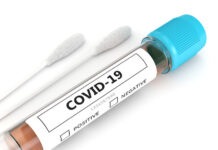New HHS regulation reverses 2017 Obama rule
The Trump administration has issued a new regulation today that reverses the prior administration’s 2017 rule limiting short-term health insurance coverage to less than three months. The new regulation allows each state to assess the needs of its residents and set its own coverage period, with the maximum being less than 12 months. State-specific regulation had been the norm in the short-term health insurance market for its three-decade existence, and the majority of states had allowed a maximum coverage period of 364 days prior to the Obama administration’s restriction, which went into effect on April 1, 2017.
Renewals and extensions of short-term policies are capped at 36 months under the new regulation and may be done “without any medical underwriting or experience rating beyond that completed upon the initial sale of the policy.”
The new regulation, which goes into effect 60 days after it is published in the Federal Register, will be welcomed by the uninsured as well as millions of existing and former short-term policyholders. The change will also receive an enthusiastic reception from a diverse range of policymakers and industry thought leaders who have championed the elimination of the 2017 regulation. Last year, 14 U.S. senators led by Sen. Ron Johnson asked for the three-month restriction on short-term plans to be rescinded. Other organizations that objected to the three-month rule included the National Association of Insurance Commissioners (NAIC), the National Association of Health Underwriters (NAHU), and the state departments of insurance in Georgia, Illinois, Kansas, Louisiana, Nebraska, Oklahoma, and Wisconsin. HealthPocket submitted a white paper and several comment letters to the Centers for Medicare and Medicaid Services (CMS) documenting the consumer harm caused by the 3-month rule. AgileHealthInsurance.com also submitted formal CMS comments and published industry statistics that dispelled many myths that were mischaracterizing this product and its purchasers.
Under the 2017 Obama restriction, consumers needing temporary coverage would have to reapply for insurance every three months. In practice, this meant that if a person were unemployed for seven months and lost employer health benefits, he or she would need to apply three separate times. Each re-application reset the deductible so that prior medical spending no longer counted. Additionally, any medical condition from the prior three months became uncovered since, as interim coverage used for less than a year, short-term plans’ economic model only insures conditions that happen during the policy’s duration period. It is expected that most health insurance companies currently selling short term plans will start marketing one-year plans by the new implementation date, and that the new regulation will encourage many highly-respected health insurers to return to the short term market and start selling new one-year plans of their own.
“The short-term regulation issued today by the departments of HHS, IRS, and Labor is extremely pro-consumer and recognizes our country’s need for a strong gap health insurance market, particularly in this period of disruption for the Affordable Care Act,” said Bruce Telkamp, founder and CEO of AgileHealthInsurance.com and HealthPocket, Inc. “Politics aside, it’s beyond debate that scant insurance company participation and ever-increasing premiums for unsubsidized Obamacare plans have pushed millions of consumers out of government health exchanges. One year short-term plans will bring immediate relief to consumers needing low premiums and unrestricted provider network coverage so they will not join the ranks of the uninsured.”
For more than 30 years, short-term health insurance has served as the fundamental bridge for individuals and families going through insurance lapses caused by job loss, a change in Medicaid eligibility, college graduation, summer vacation, or retirement before Medicare enrollment. These plans are significantly less expensive than exchange health plans and can be purchased any time of year. Their core benefits range from doctor and specialist visits to hospitalization and emergency care. Their unrestricted network model also provides the maximum breadth of healthcare provider acceptance. Insurance applications are medically underwritten by the insurance company so acceptance is not guaranteed but prior industry analysis has found nearly 90% of applicants were approved for coverage. Additionally, health conditions that arose prior to the beginning of coverage are not paid by the plans.
Kev Coleman, Head of Research & Data at HealthPocket commented, “The enactment of the three-month restriction in 2017 by the Obama administration failed to improve Affordable Care Act enrollment as hoped and, instead, hurt short-term policyholders financially by resetting their deductibles multiple times per year. These multiple resets added thousands in out-of-pocket burdens unnecessarily. The return of short-term products in their traditional form comes at a crucial time since these plans not only provide gap insurance, but also provide a safety net to keep unsubsidized consumers insured when they are priced out of the Obamacare market and lack suitable alternative coverage in their area. The plight of the unsubsidized will become even more challenging in 2019 given that the Congressional Budget Office has predicted a 15 percent premium increase for exchange plans. This increase will only apply to the unsubsidized since subsidized buyers pay a fixed percentage of monthly income. Regarding the potential impact of this increase, a recently published government study found that the 21 percent rise in 2017 Obamacare premiums was met with a 20 percent decline in enrollment among unsubsidized consumers compared to only a three percent enrollment decline among the subsidized.”




